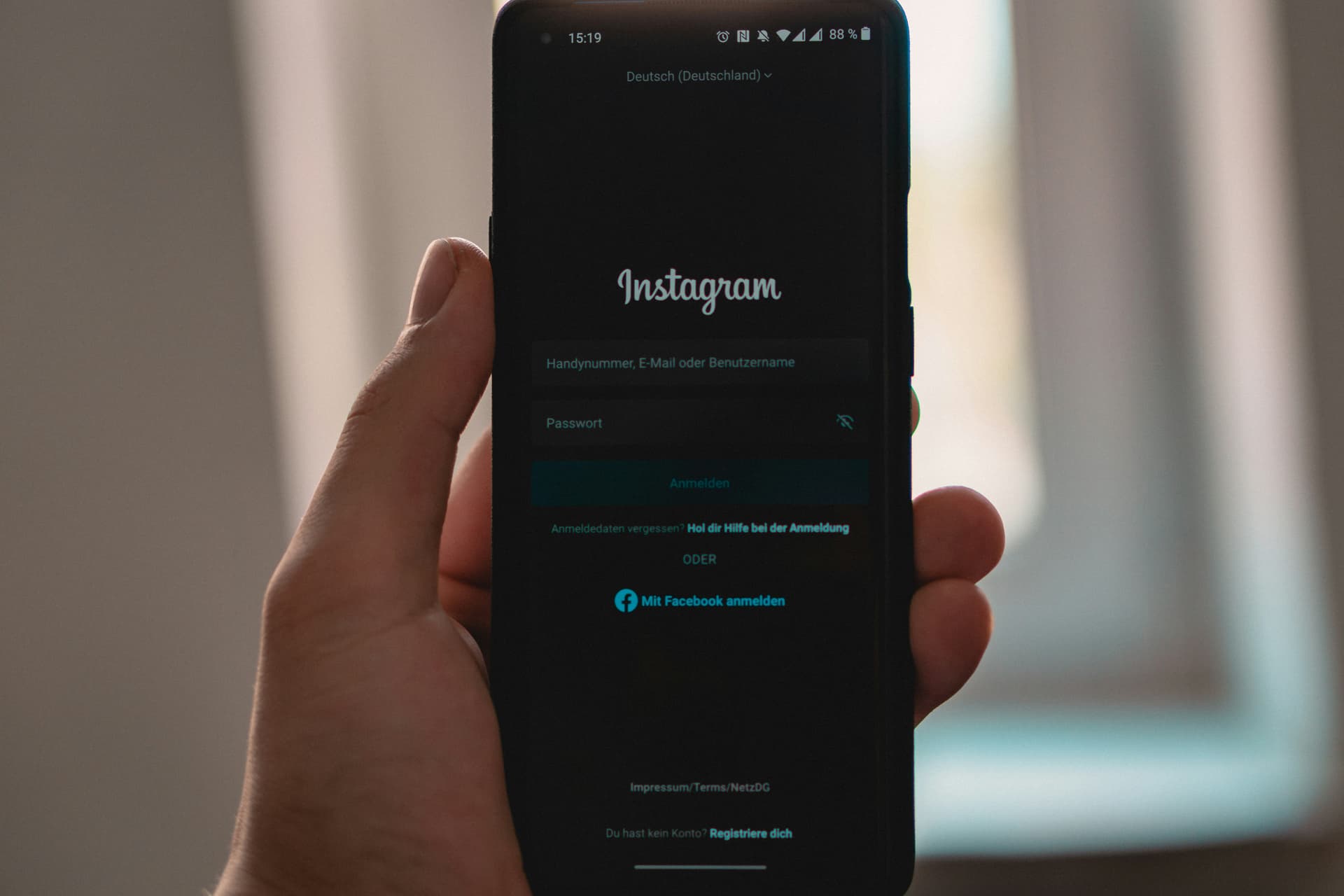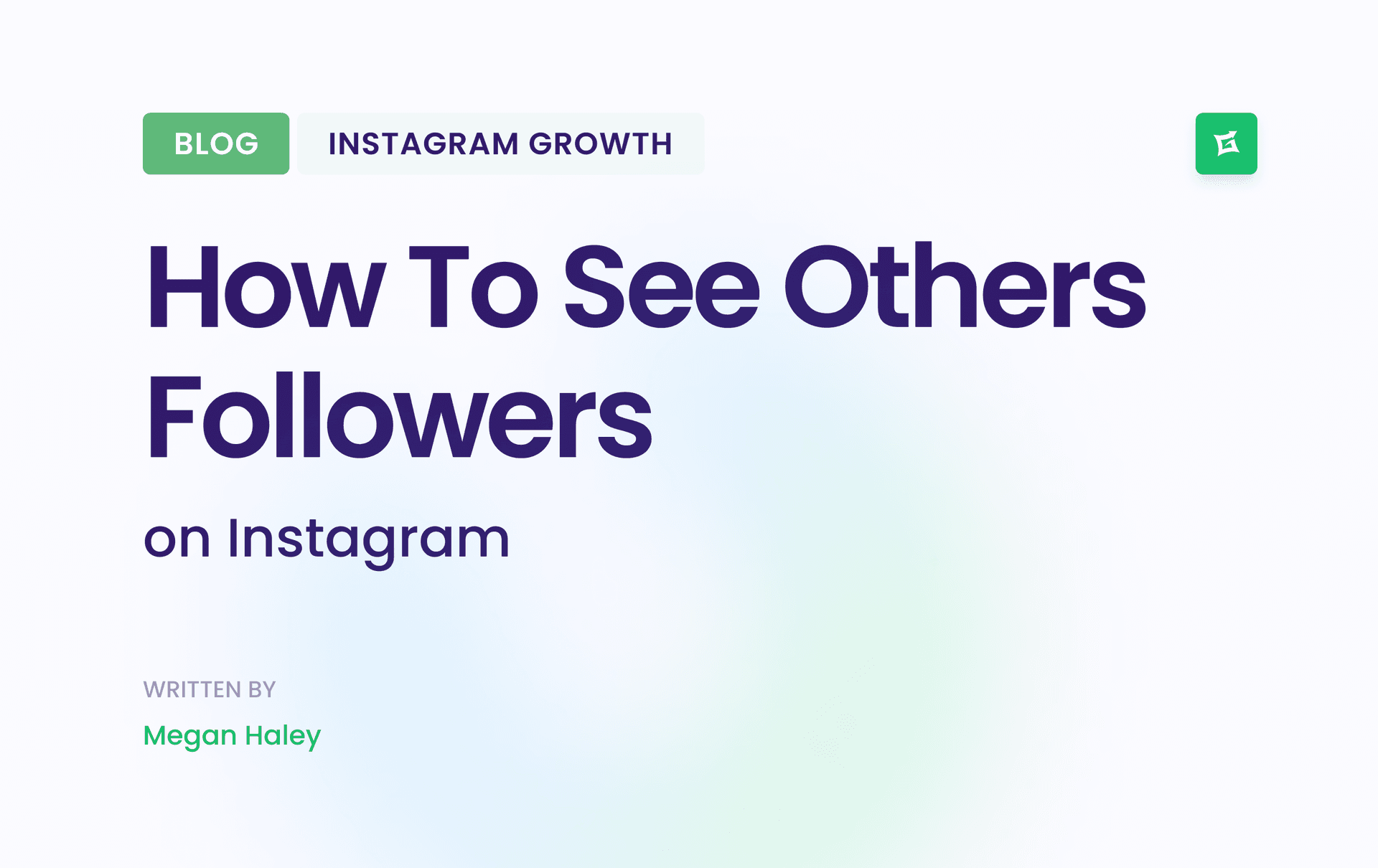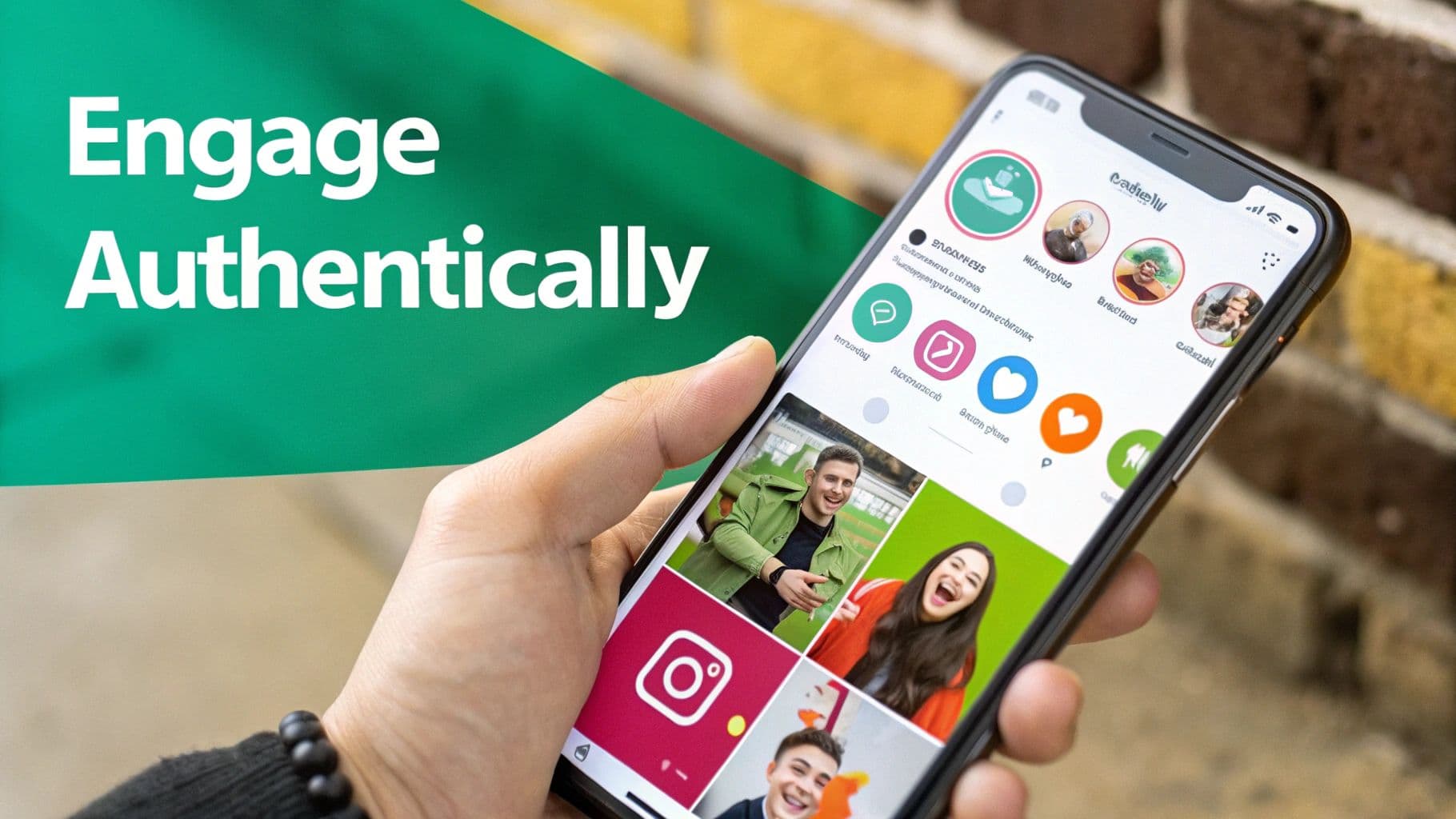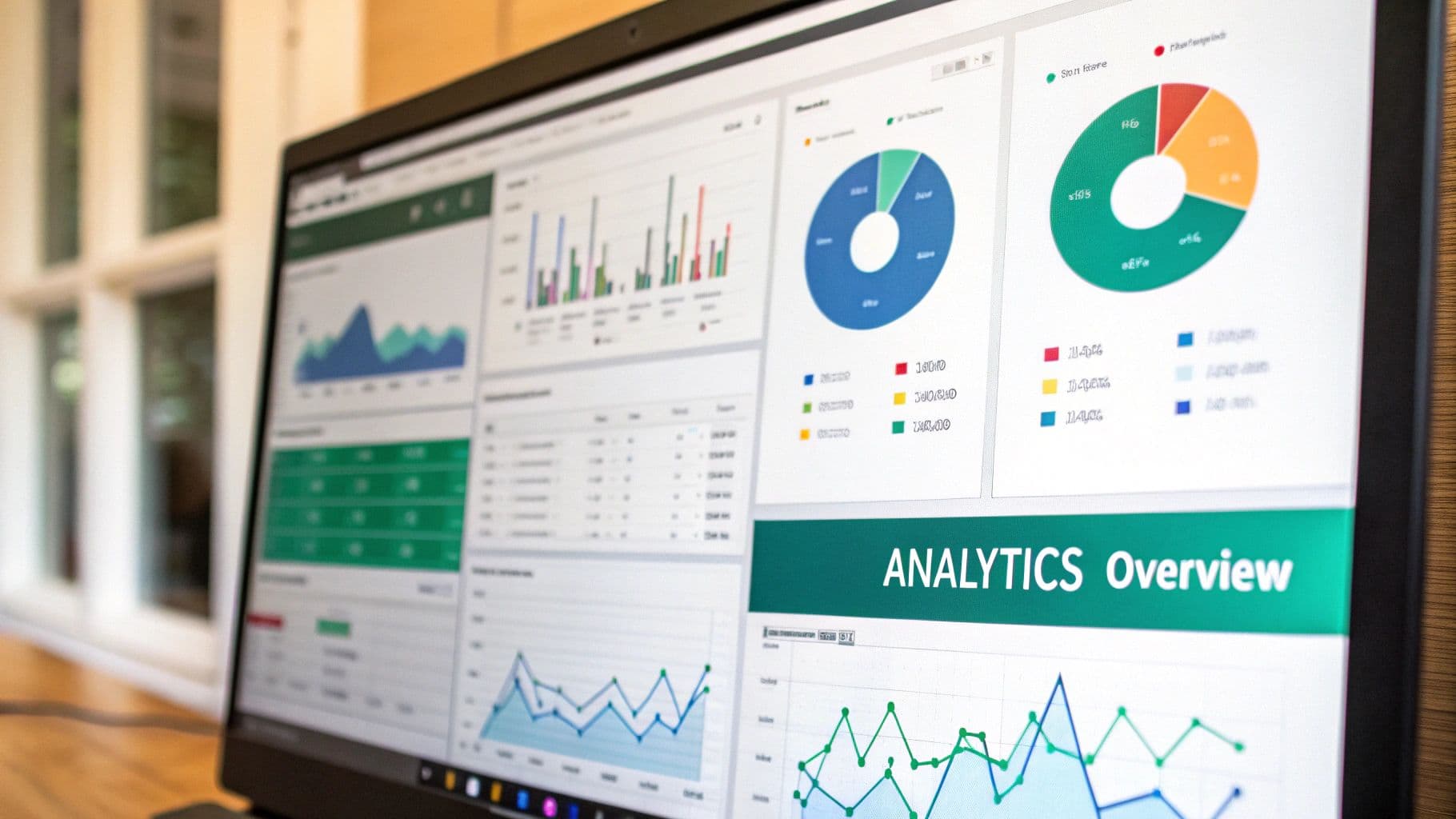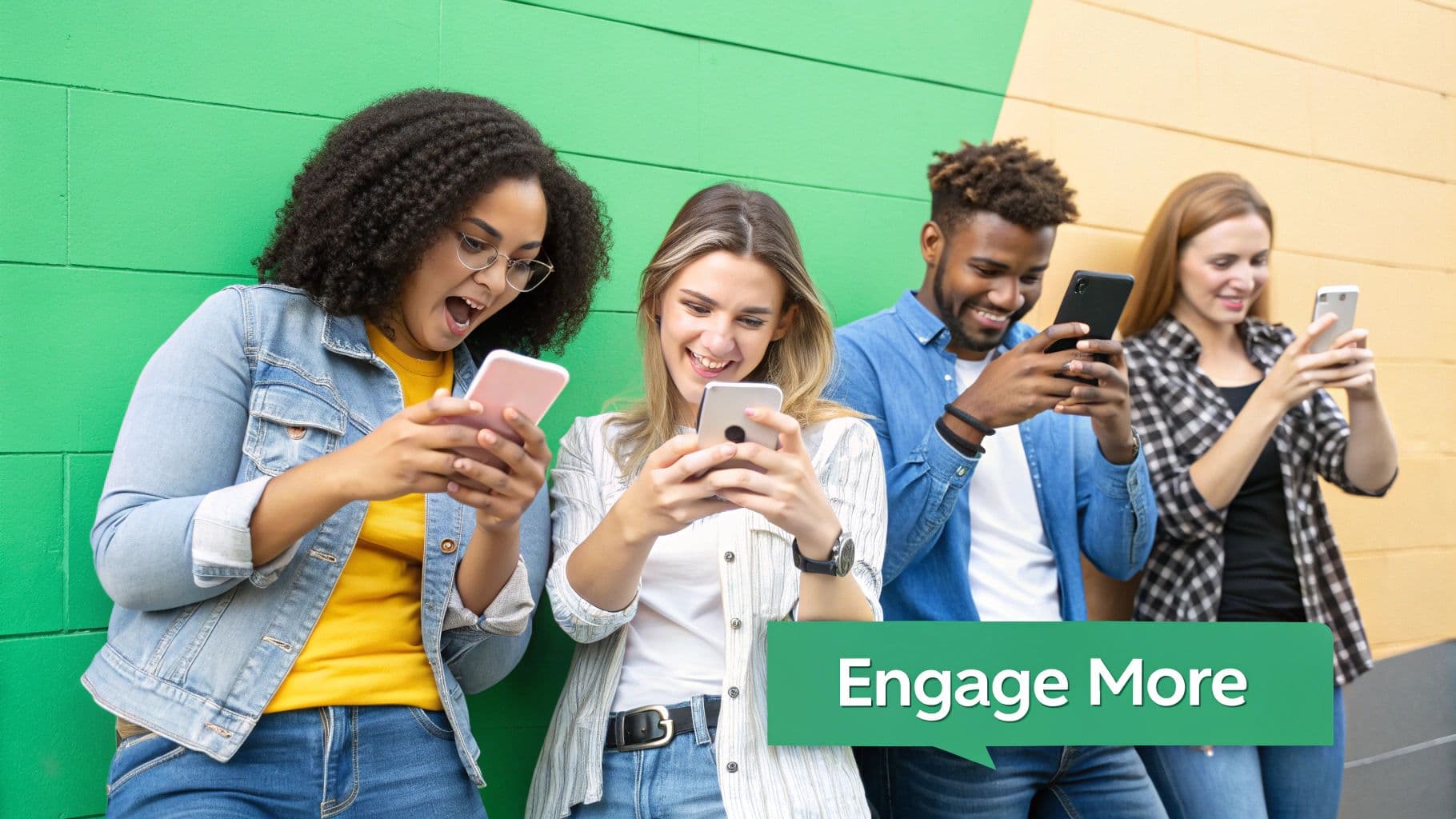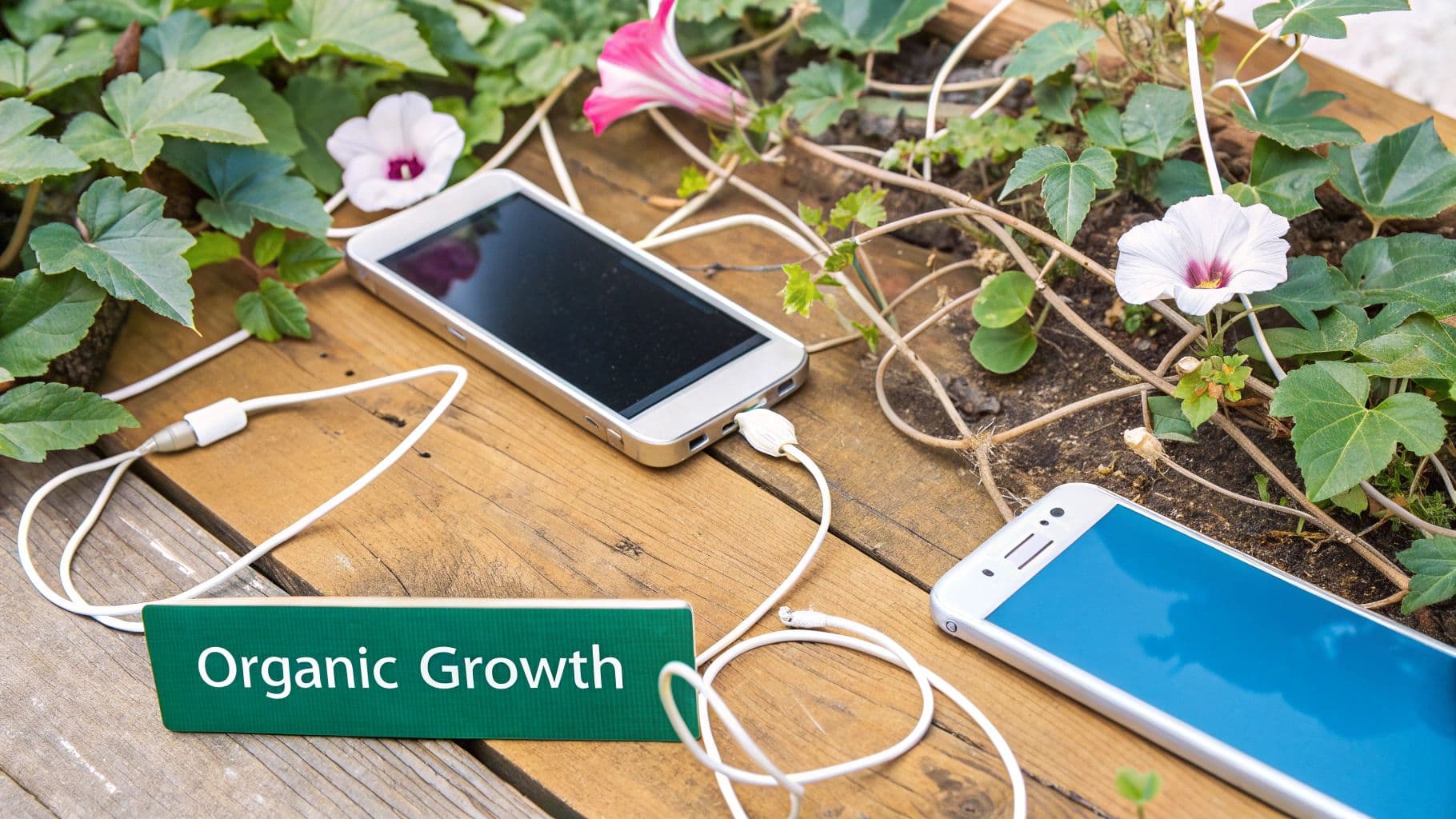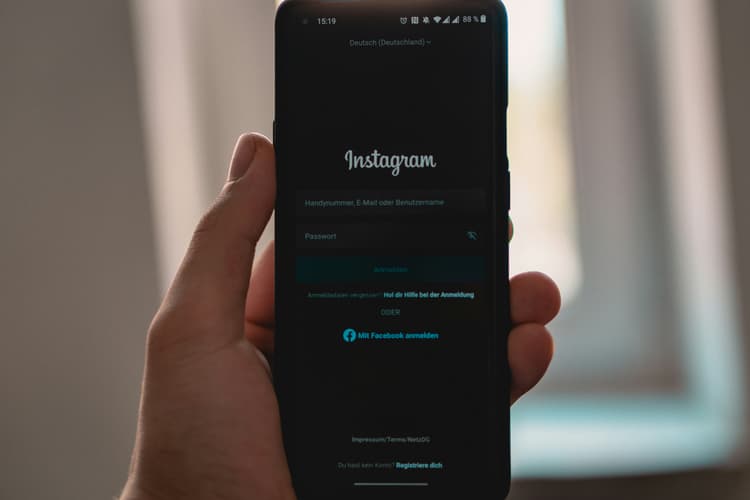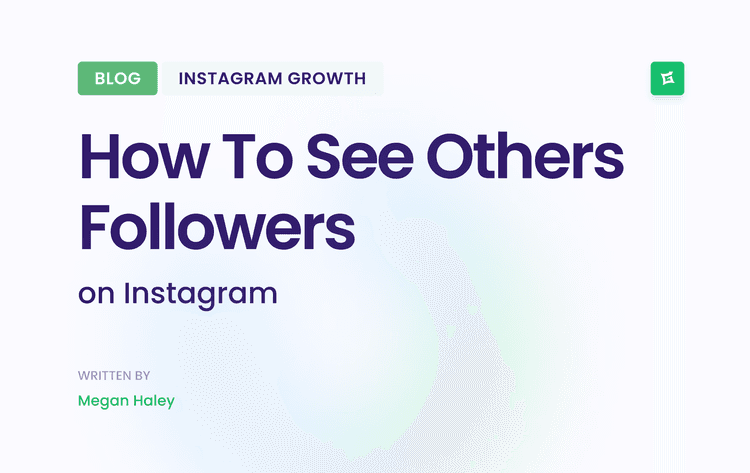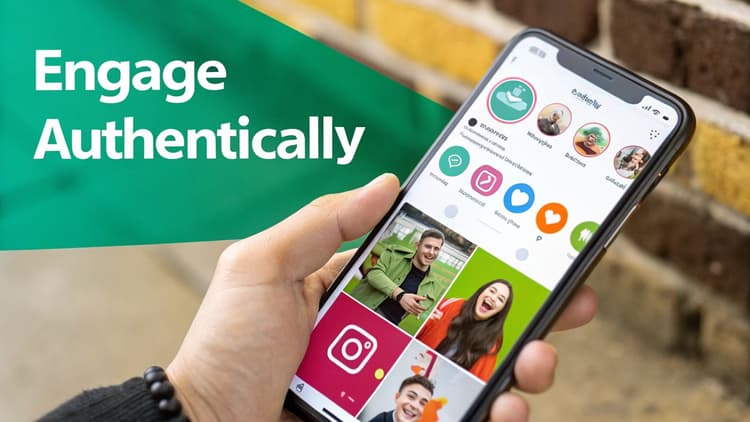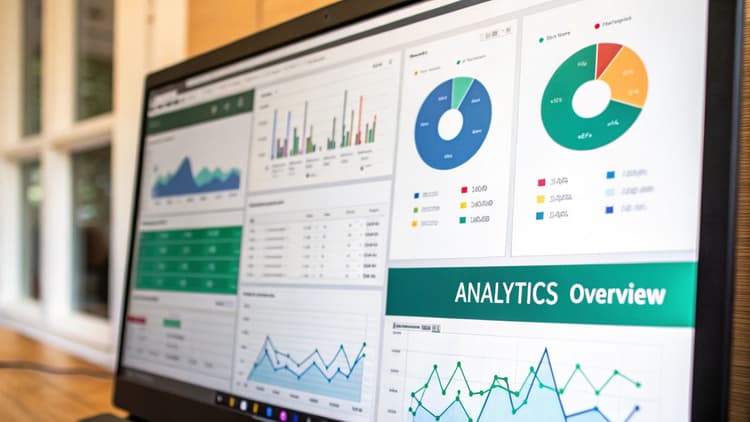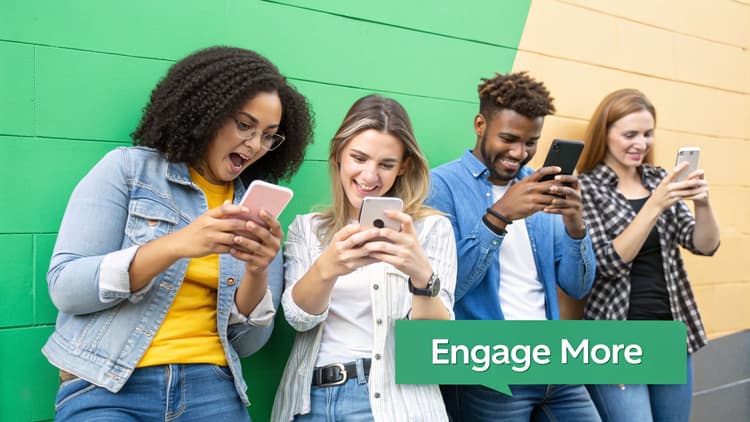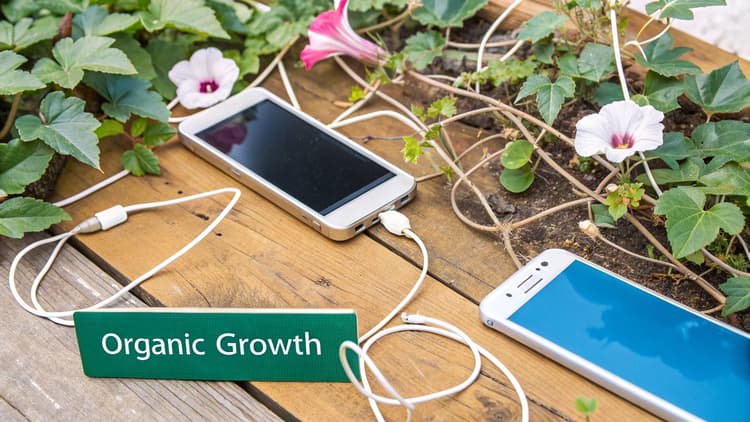What Are Social Media Impressions in Simple Terms
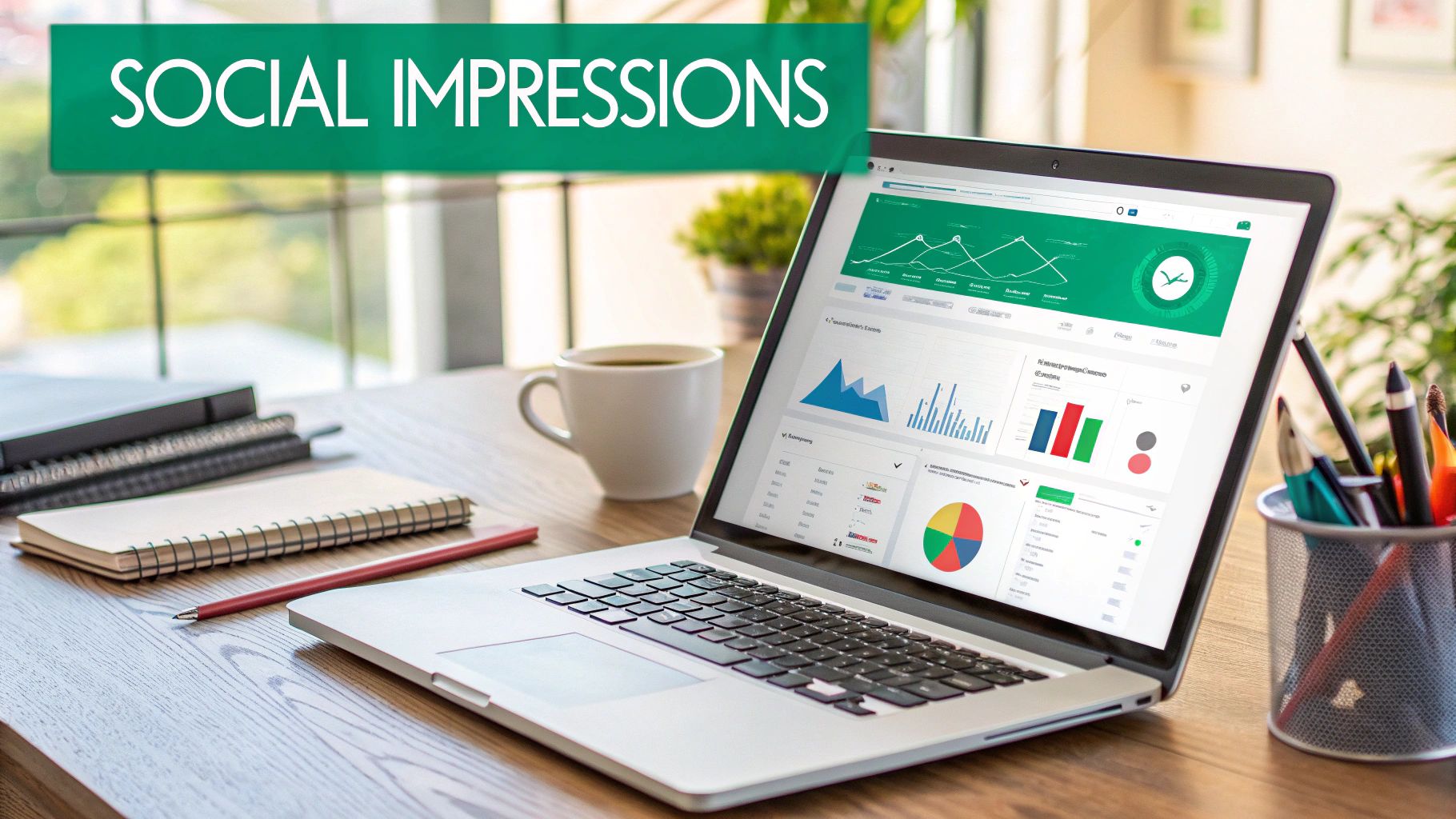
Impressions are the most basic, unfiltered measure of your content’s visibility. It’s not about how many individual people saw your post; it’s purely about the total count of views. So, if one person sees your tweet in their feed and then sees it again when a friend retweets it, that’s two impressions from a single person.
This metric is the bedrock of social media analytics because it represents your potential exposure. Before anyone can possibly like, comment, share, or click, your content first has to show up. A high impression count is a strong signal that the platform's algorithm is putting your content in front of people.
Why This Metric Can Get So Big
The sheer scale of social media is what allows impression numbers to skyrocket. By mid-2025, the global social media population hit an estimated 5.41 billion people, with roughly 7.6 new users signing up every second. Every single one of these users is a potential screen for your content to appear on, which is why impressions can easily climb into the thousands, millions, or even more. You can explore more fascinating global social media usage stats on Talkwalker.com.
To make this crystal clear, let's quickly break down what an impression is and, just as importantly, what it isn't.
Impressions At a Glance
The list below gives you a quick summary to help distinguish impressions from other related ideas.
An impression is one single instance of your content being displayed on a user’s screen. For example, your TikTok video autoplaying as someone scrolls through their For You Page counts as an impression.
Reach refers to the total number of unique people who saw your content. For instance, if the same TikTok video was seen by 500 different people, even if it was shown 700 times (impressions), the reach would still be 500.
Engagement is any active interaction with your content, such as likes, comments, shares, or saves. For example, if 50 of those 500 people liked your video, that counts as engagement.
Ultimately, impressions are the first step in the journey. Without them, you can't get reach, and without reach, you can't get engagement. It all starts with getting seen.
Understanding The Difference Between Impressions and Reach
One of the most common trip-ups in social media analytics is getting impressions and reach confused. They sound like they could be the same thing, but they measure two completely different, though related, aspects of your content's performance. Nailing this distinction is the first step toward truly understanding your data.
Think of it like putting up a billboard on a busy street.
Reach is the total number of unique people who drive by and see your billboard that day. If 1,000 different cars pass it, your reach is 1,000. Simple enough.
Impressions, on the other hand, are the total number of times your billboard was seen. Some of those 1,000 people might drive past it in the morning on their way to work and then see it again on their way home. That one person just generated two impressions. So, you might have a reach of 1,000 people, but 2,000 impressions (or even more).
This is why your impression count is almost always higher than your reach. One person can be responsible for many impressions, but they only ever count as one person in your reach metric. If you want to dig a bit deeper into this, this guide on what impressions are on social media is a great next step.
When Do Impressions Matter More Than Reach?
So, what’s the story when your impression count is way higher than your reach? It simply means your content has a high frequency—the same users are seeing it over and over.
This isn't a bad thing at all. It often signals that your content is resonating. The platform's algorithm sees it as valuable or engaging and keeps pushing it into the same people's feeds. It’s a great sign that your content has some real staying power.
> A high impression-to-reach ratio is often a clue that your content is "sticky." It tells the algorithm that this post is worth showing again, which is exactly how you build brand recall and make sure your message sinks in.
This visual gives you a perfect snapshot of how this plays out. You can see how a single post's total views (impressions) stack up against its unique viewers (reach).
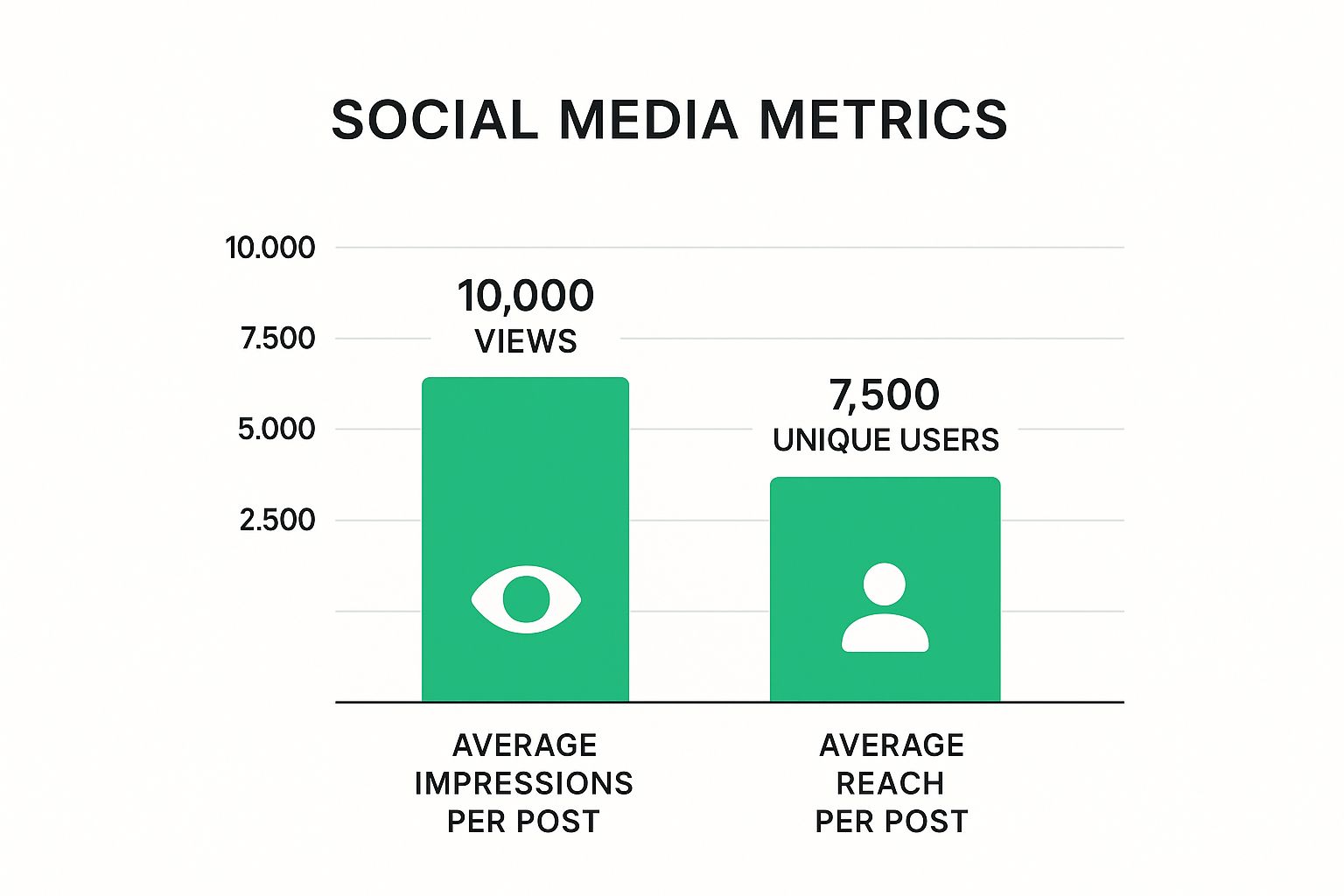
As the numbers show, even though 7,500 unique people saw the post, it was displayed a total of 10,000 times. That gap is all about the repeated exposure that drives impressions up.
Impressions vs Reach Side-by-Side Comparison
To hammer home the difference, let’s put them side-by-side. Seeing them compared directly makes it much easier to decide which metric to focus on for your specific campaign goals.
Impressions measure the total number of times your content is displayed on a screen. For example, if one person sees your tweet in their main feed and then sees it again when a friend retweets it, that counts as two impressions. Impressions are best used for gauging ad campaign frequency, tracking the overall visibility of a post, and determining if the algorithm is favoring your content.
Reach measures the number of unique accounts that saw your content at least once. For instance, if the same person saw your tweet twice, they would only count as one unique user reached. Reach is best used for measuring the total size of your audience, understanding brand awareness, and tracking how far your message is spreading.
Ultimately, both metrics tell a piece of the story. Reach tells you how many people you're talking to, while impressions tell you how often they're hearing your message. You need both for a complete picture of your performance.
Why Impressions Are a Cornerstone of Social Media Growth
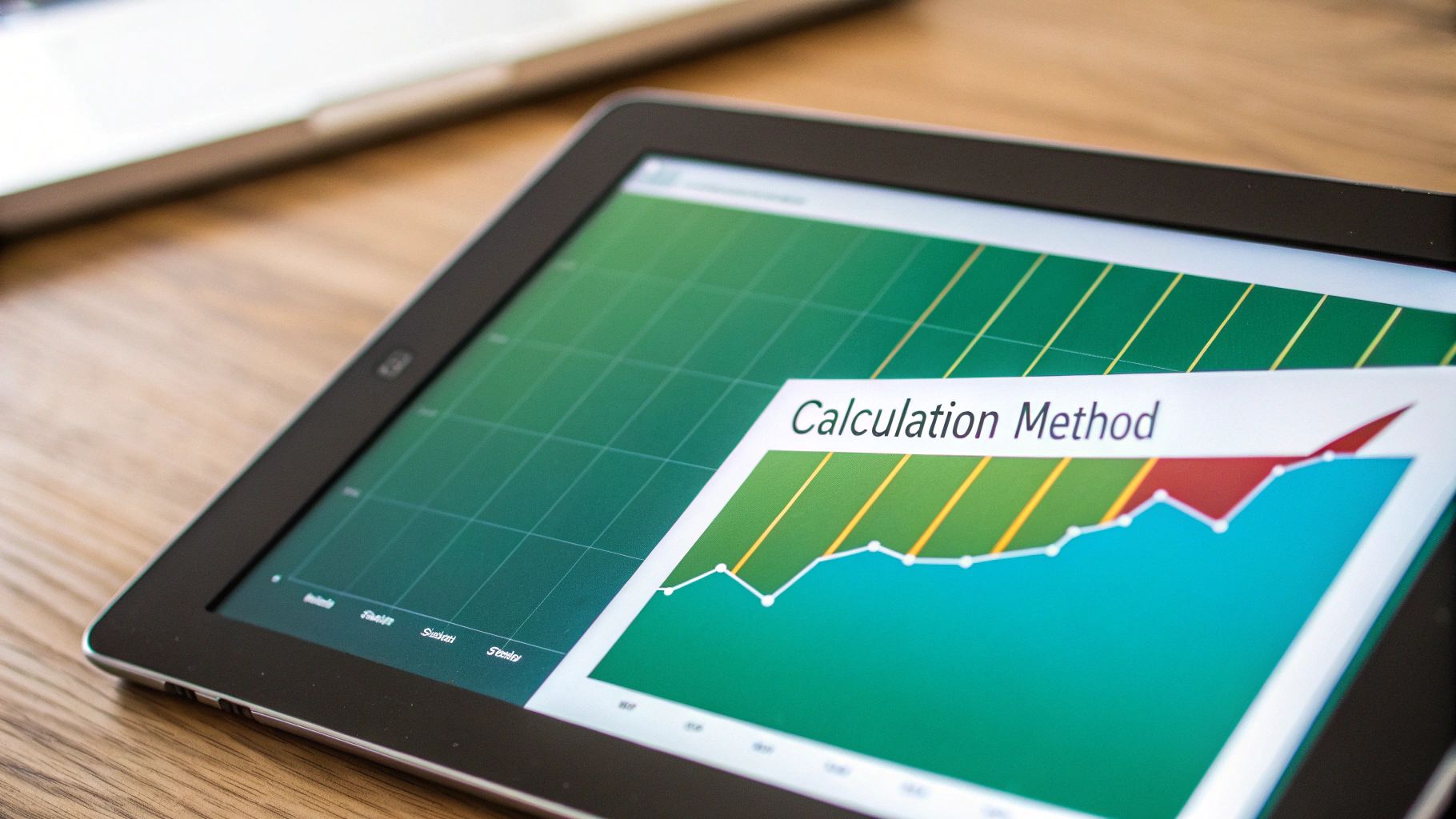
It’s easy to write off impressions as just another "vanity metric," but that’s a big mistake. They are the absolute bedrock of any successful social media strategy.
Think of it like a funnel. Impressions are the wide-open top. Without a constant stream of eyes on your content, you simply can't get the clicks, likes, comments, or sales that follow. Every single action a user takes starts with one thing: seeing your post.
When your impression count is high, it’s a great sign. It tells you that platform algorithms are on your side, your ad targeting is hitting the mark, or your creative is genuinely connecting with people. In short, impressions are the engine of brand awareness.
Impressions As a Diagnostic Tool
Impressions do more than just measure eyeballs—they act as a vital health check for your content strategy. A sudden or sustained drop in impressions is an early warning flare that something’s wrong.
A dip like this could point to a few different problems:
Content Fatigue: Your audience might be getting bored with the same old format.
Algorithm Shifts: Platforms are always tweaking things. A drop could mean you need to adjust your approach.
Ineffective Targeting: You might be shouting into the wrong room, and your content isn't finding the right audience to gain traction.
By keeping a close eye on your impression trends, you can catch these issues before they derail your efforts and make smart, data-backed changes. This proactive mindset is key to keeping your momentum going. For a deeper dive, check out our guide on how to improve Instagram reach to find more ways to boost your visibility.
> Tracking impressions isn't just about counting potential views. It's about understanding how well your content is being distributed and spotting problems before they hurt your results.
The Economic Impact of Impressions
Let's talk money. Impressions have a direct and serious impact on your budget, especially when you're running paid ads. The most common pricing model out there is CPM (Cost Per Mille), which translates to "cost per thousand impressions." How efficiently you can rack up impressions directly impacts how far your ad dollars stretch.
This tight link between views and cost is exactly why every marketer needs to get comfortable with impressions. Consider this: global social media ad spend is expected to reach a staggering $276.7 billion in 2025. That entire investment is built on securing a high volume of impressions.
And with an estimated 83% of that spend happening on mobile by 2030, the value of every single view on a screen is only going up. Ultimately, impressions are the currency of visibility online. Learning how to earn them and what they mean is fundamental to building a powerful brand and growing in a crowded digital world.
How Major Platforms Report Impressions Differently
So, you've got the basic idea of what a social media impression is. That's the easy part. The tricky bit is realizing that an impression on Instagram isn't the same as an impression on LinkedIn. Every platform plays by its own rules, and if you don't know them, you can't accurately measure what's going on.
Think of it like currency. A dollar, a euro, and a yen are all money, but they aren't worth the same. You have to know the exchange rate. It's the same with impressions—each network has its own "value," and understanding that is key to seeing the full picture of your visibility.
This isn't just a minor detail; it's fundamental to your strategy. Just look at the recent platform trends: Instagram impressions jumped 13% year-over-year, while Facebook's took a 35% nosedive. Meanwhile, X managed to triple its average impressions per post. These numbers scream that a one-size-fits-all approach is a recipe for failure. You can dive deeper into these social media benchmarks on Socialinsider.io.
Instagram and Facebook Impressions
Since Meta runs both Instagram and Facebook, you’d expect them to be similar, and they are—to a point. The real difference comes down to the content formats.
Instagram: You get a detailed breakdown of where your content is seen. The platform separates impression counts for Feed posts, Stories, and Reels. This lets you pinpoint exactly which format is getting the most eyeballs at any moment.
Facebook: Things are a bit more bundled together. An impression generally means one of your Page's posts appeared on someone's screen. This could be in their news feed, directly on your Page, or when a friend shares your content.
For both, an impression is registered the instant the content loads on a screen. It doesn't matter if the user scrolls right past it a millisecond later—it still counts.
X (Formerly Twitter) Impressions
X keeps things simple. An impression is counted any time a user sees your Tweet. That's it. It could be on their main timeline, in a search result, or on someone’s profile.
> Key Takeaway: The fast-moving, real-time feed on X means a single Tweet can rack up a huge number of impressions in a very short time, especially if it gets swept up in a trending topic or retweeted by a major account.
LinkedIn and TikTok Impressions
These two platforms couldn't be more different—one is for professional networking, the other for viral entertainment—and their impression metrics show it.
LinkedIn: To count as an impression, your post has to be at least 50% visible on screen for a minimum of 300 milliseconds. This is a much tougher standard than other platforms, designed to give a more meaningful measure of viewership to its professional user base.
TikTok: The main metric here is “Video Views,” which is just TikTok's way of saying impressions on the For You Page. A view is counted the second a video begins to auto-play as a user scrolls.
Actionable Strategies to Increase Your Social Impressions
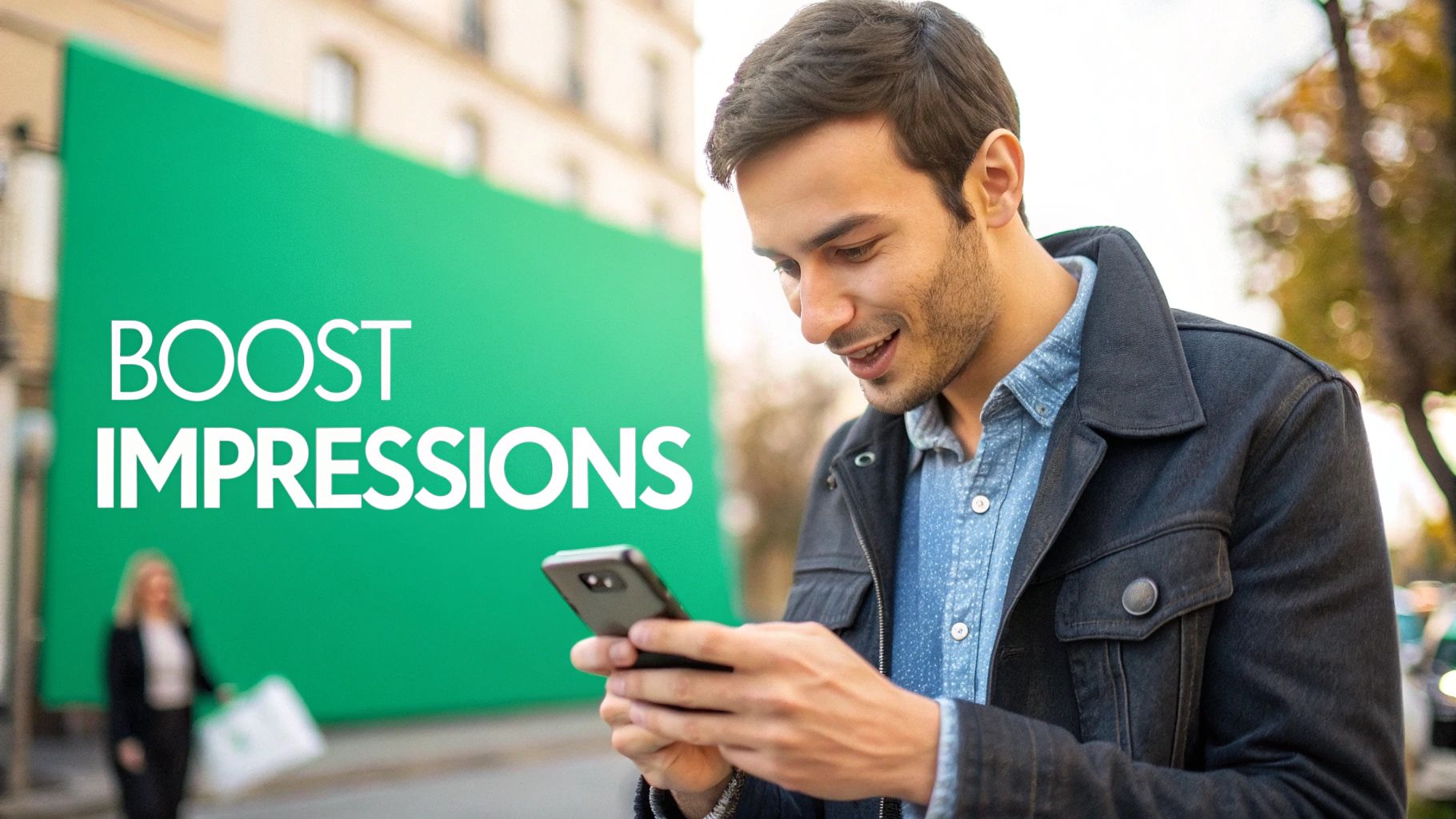
Knowing what social media impressions are is one thing. Growing them is a whole different ball game.
The goal is to get the platform algorithms working for you, showing your content to more people, more often. This isn't about luck; it's about being deliberate with your strategy. Let's walk through some proven ways to give your content the best possible chance to be seen.
Optimize Your Posting Times
This is probably the fastest way to see a jump in your impressions. You need to post when your audience is online and ready to engage.
Think about it: posting at 2 AM might check a box on your to-do list, but if your followers are all asleep, your content gets buried in their feeds by morning. It never gets that initial momentum.
The good news is you don't have to guess. Dive into your platform’s built-in analytics, like Instagram Insights or Facebook's Meta Business Suite. They'll show you exactly when your followers are most active. Posting your best stuff during these peak hours gives it an immediate visibility boost, which signals to the algorithm that your content is worth showing to even more people.
Master Your Hashtag Strategy
Hashtags aren't just for decoration; they're discovery tools. They categorize your content and put it in front of people who don't follow you yet.
A huge mistake I see people make is only using massive, generic hashtags like #marketing. Sure, it has millions of posts, but that also means it's incredibly competitive. Your content will be gone in a flash.
A much smarter approach is to use a mix of different hashtag types:
Broad Hashtags: It's okay to use 1-2 of these really popular tags (like #socialmediamarketing) to get a shot at a huge audience.
Niche Hashtags: This is where the magic happens. Add 3-5 tags that are super specific to your industry or topic (like #b2bcontentstrategy). You'll attract a much more relevant audience here.
Branded Hashtags: Always include a unique tag for your business (e.g., #GainstyGrowth). This helps you build a community and easily find content your fans create about you.
This tiered strategy helps you compete for attention on multiple fronts, from wide-open discovery to very specific searches.
> A great hashtag strategy isn't about finding the biggest audience; it's about finding the right audiences. By blending broad and niche tags, you dramatically increase the number of places your content can show up, which directly fuels your impression count.
Embrace Trending Content Formats
Here’s a little inside baseball for you: social media platforms always push their newest features. Hard.
Right now, that means short-form video. We're talking Instagram Reels, TikToks, and YouTube Shorts. The algorithms are literally designed to promote this type of content on discovery pages like the "For You" page or the Reels tab.
When you create content in these formats, you're essentially getting a fast pass to more visibility. A static image post might only be shown to a small percentage of your existing followers. But a well-executed Reel has the potential to be served to thousands of people who have never heard of you, causing your impressions to skyrocket.
To really get the most out of your efforts, your content planning needs to be rock-solid. For a deeper dive, check out these proven social media content planning strategies. They can give you a great framework for creating content that consistently earns high impressions.
Turning Impressions Into a Sharper Content Strategy
Raw data is just a jumble of numbers until you know how to read the story it's telling. Tracking social media impressions is a fantastic start, but the real magic happens when you use those numbers as a diagnostic tool for your content strategy. This is the leap from just counting views to making genuinely smarter decisions.
One of the best ways to get started is by looking at your impressions-to-reach ratio. If your impression count is way higher than your reach, it tells you that the same people are seeing your content over and over. This could be a great sign—it might mean your content is so "sticky" that the algorithm keeps showing it. On the other hand, it could be an early warning that your audience is getting tired of seeing the same thing.
Find Your Winning Content
A simple but incredibly powerful trick is to line up your impression spikes with specific posts. When you see a post suddenly get a huge number of impressions, it's time to play detective and figure out why.
Was it the format? Maybe that Reel you tried blew your static images out of the water.
Was it the topic? Did you touch on a subject that got people talking?
Was it the timing? Did you happen to post right when your audience was most active?
Answering these questions helps you uncover the patterns behind what grabs attention. Once you pinpoint these high-impact elements, you can build your content plan around what you know works. For example, building a killer Instagram content strategy relies almost entirely on understanding which posts get the most eyeballs.
> Think of impression data as a roadmap. It shows you the exact routes—the formats, topics, and styles—that lead to the best visibility. Use it to double down on what’s working and stop wasting time on content that's going unseen.
Doing a quick content audit with this data can completely change your results. Just set up a simple spreadsheet with your recent posts and their key metrics: impressions, reach, and engagement rate.
Sort the whole thing by impressions, and voilà—you can instantly see your most visible content. This simple exercise separates your winners from your duds, giving you the hard evidence you need to refine your strategy. This is how you stop just tracking and start taking real, strategic action.
Common Questions About Social Media Impressions
Once you start digging into your analytics, you'll probably run into a few specific questions. Let's tackle some of the most common head-scratchers that come up when people start working with impression data.
Are Served and Viewed Impressions the Same Thing?
Nope, and this is a crucial difference to understand. A served impression just means your content was delivered to someone's feed. Think of it as a letter arriving in a mailbox.
A viewed impression, on the other hand, means the person saw it on their screen for a certain amount of time. It's the difference between the letter arriving and someone taking it out to read it.
Platforms like LinkedIn focus on viewed impressions to give you more accurate data. In contrast, places like Instagram and Facebook often count an impression the instant it loads, even if you scroll right past it without a second thought.
How Do I Set Realistic Impression Goals?
This comes down to where you are in your social media journey. If you're just starting, your goals will look very different from an established brand's. The best place to begin is with your history.
> Take a look at your average impressions per post over the last 30-60 days. That's your baseline. From there, aim for a steady, achievable increase—maybe a 10-15% lift each month as you try out new tactics.
It’s tempting to compare your numbers to a huge account in your industry, but that's a recipe for frustration. Focus on beating your benchmarks. That kind of incremental growth is what lasts.
Are Paid Impressions Worth It?
When used the right way? Absolutely. While building organic reach is the long-term goal, paid impressions give you a level of control and precision that you just can't get organically.
Paid ads are perfect when you need to:
Announce a new product and get it in front of the exact right people.
Give your best-performing organic posts an extra push to reach a bigger audience.
Drive attention to a time-sensitive sale or event that needs eyeballs now*.
Think of paid impressions as a turbo boost for your most important content.
Ready to turn those impressions into followers? Gainsty uses advanced AI and expert strategy to drive real, organic Instagram growth. See how we can boost your visibility at https://www.gainsty.com.

